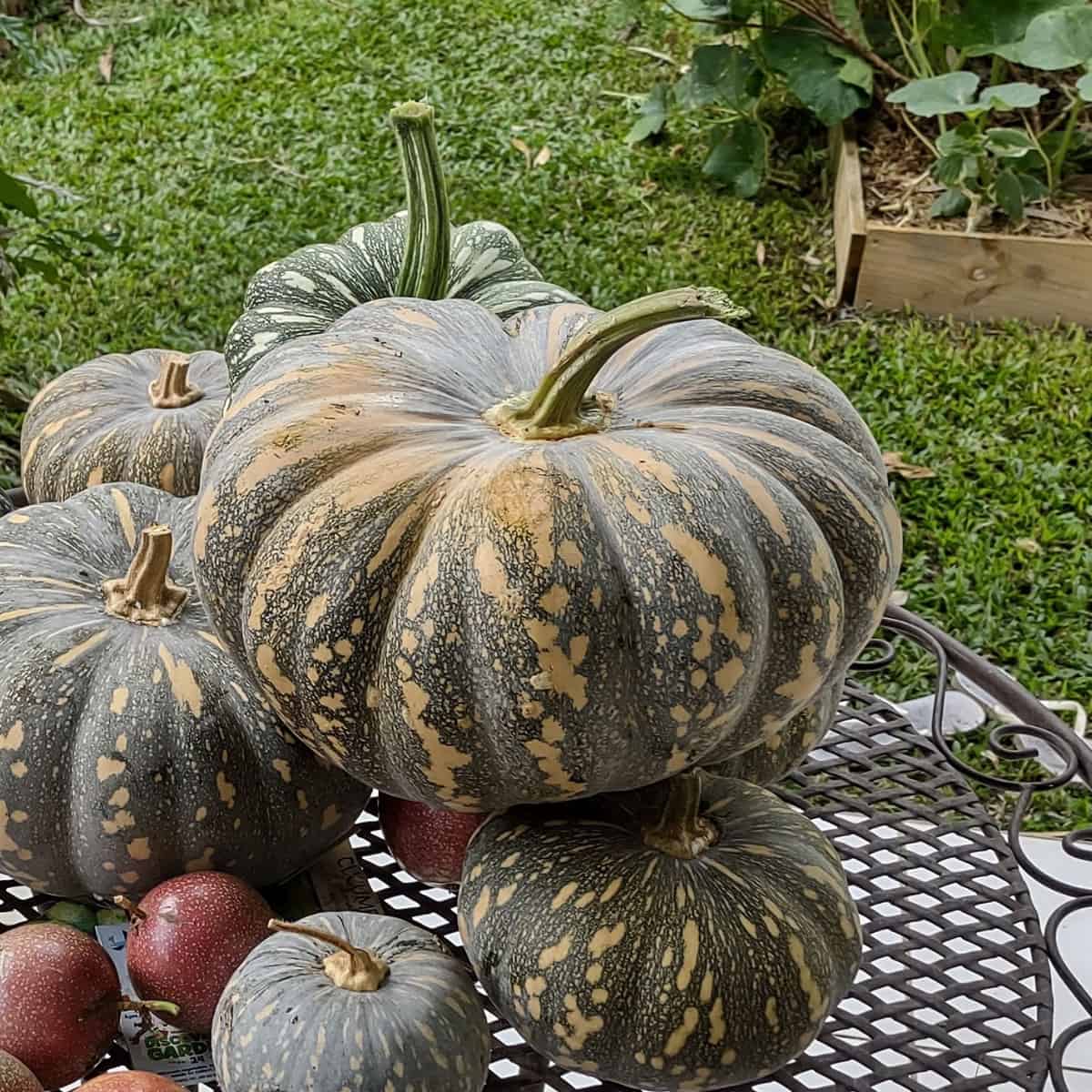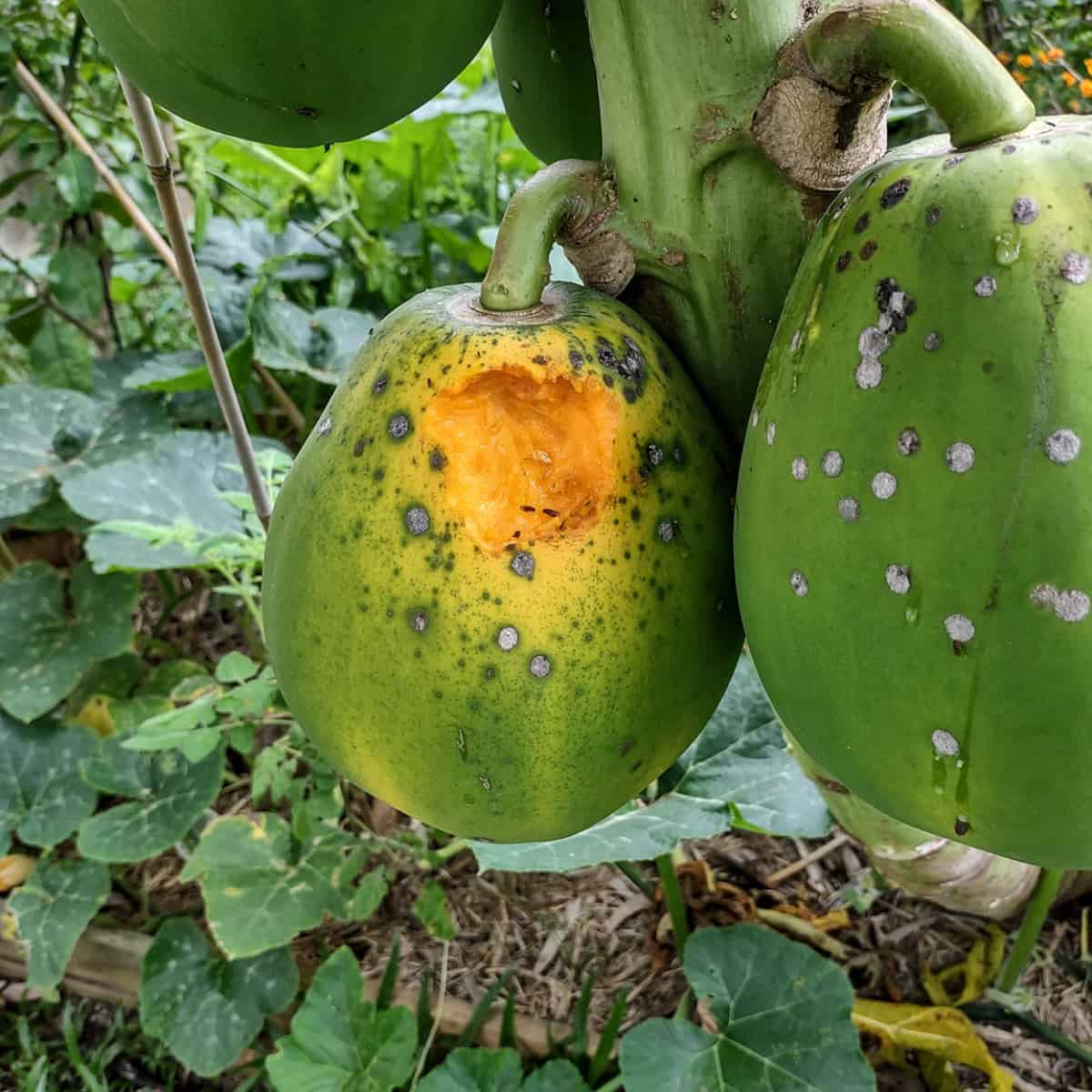This post may contain affiliate links.
June is a great month in the garden, it’s winter in the southern hemisphere and a good time to plant just about anything other than the real heat-loving plants. It’s not a good time to sew snake beans or basil, but brassicas will be much happier in winter.
What are we planting and harvesting in June in our tropical garden. What’s growing in June, what’s dying, what are we ripping out and what’s growing from seed. June is winter here and we have our shortest day. From June onwards days get longer and things get hotter. These month-by-month posts are my record. I want to be able to compare what my plants are doing in the garden over multiple years and find the patterns. It’s really interesting to observe like this and it’s the best way to learn. Seasonality means not-much in the tropics.

What Food Plants Can We Plant and Harvest in June?
June is the first month of winter here and the nights are a little chilly. We often have some good rain in May, but by July it’s starting to get dry.
Winter doesn’t mean an end to fresh garden produce here, it’s actually one of the best times of year for growing food in a tropical garden. You’d be surprised at some of the food plants you can grow in the tropics in winter, traditional cold-weather food plants like broccoli and snow peas prefer this time of year, while our tomatoes are also flourishing.
Winter is also when we harvest a lot of our tropical fruit. We’re still picking passionfruit, papayas, and grapefruit, but we picked the last of our pineapples in May.
Growing From Seed in June
What will grow from seed in June, the depths of winter. I ran a little experiment to find out. So far what’s germinating in June includes the following vegetables.
- Rocket (Arugula)
- Tomatoes
- Pumpkins
- Kale (all varieties I’ve tried)
- Coriander (not Asian)
- Tomatoes
- Eggplant or aubergine
- Sweet Corn
- Zucchini or courgettes
- All types of lettuce
Pumpkins

In June, the first month of winter here in tropical Queensland, we have mountains of pumpkins.
We’ve picked the main part of the harvest in May and some pumpkin vines have died back. Other vines are growing strongly and producing female pumpkin flowers which are setting fruit and developing nicely.
Is it possible to have too many pumpkins? We’re at that stage. We have a full post containing our non-scientific findings on growing pumpkins in the tropics. We also have baby pumpkin plants sprouting randomly from some home-made compost. The pumpkins just keep coming!
You can sew pumpkin seeds at pretty much any time of year in the tropics.
I noticed that pumpkin was $3.99/kg in the supermarket this month. That means our biggest pumpkin so far, at 5.8Kg would have cost us over $20. We have a couple of hundred dollars worth of pumpkins in storage and more are still forming.
Papayas

The papayas (they are not pawpaws, but they’re often wrongly called pawpaws in Australia) are ripening now.
Most of my papayas set a lot of fruit in the wet season. That means they’re ripe about now, for the most part.
We have several varieties and plants grown from hybridised seeds. There are a lot of papayas happening out there. When papayas are ripe they gradually turn orange, but unfortunately, birds are good at spotting ripe fruit too, as you can see above. This is the second one the birds have got to this month.
A good ripe papaya is huge and we can’t eat it all, so this month we’re making papaya jam, papaya crumble, and papaya curd. We’ll be adding recipes to this site in time.
Thai green papaya salad is also a delicious possibility. In winter the papaya plants don’t grow much, they’re just busy ripening fruit and some are producing constant flowers.
Chilli Plants
We have hundreds of mostly green chili peppers. These plants just never give up!
The habanero bush is absolutely covered in ripe red fruit and we’re fermenting super hot chilli sauce every few weeks.
I really thought they’d quit as temperatures dropped but they haven’t at all. However, some of our more “exotic” super-hot pepper plants are looking a but yellow and sick. It’s cold at night and I don’t think they’re happy. I’ve had hot peppers die at this time of year before.
Not to worry, I’ll save some seed and get more growing. Germination right now in the cold may or may not happen, I’ll test it out, some now, some when things get warmer.
Citrus Fruits
Last month, this month and next month are when we pick the bulk of our ruby grapefruit. There are still a lot of grapefruit on the regular grapefruit trees and we’ve been harvesting grapefruit since about April, although the first weren’t fully ripe.
The other citrus trees (lemons, limes, oranges) are currently doing not much other that some leafy growth on some of the trees. That’s not usual for citrus in winter, but hey, this is the tropics.
One lemon tree (unknown variety, maybe Mayer) has a few flowers and still has some ripe and unripe lemons on the tree.
You’re not supposed to give citrus trees high nitrogen fertiliser in winter, only in leafy growth periods.
I’ll expect flowers usually in August into September, the start of spring.
The (known) Meyer lemon is the exception, that one flowers pretty randomly, but nothing at the moment.
We have some really cool swallowtail butterfly caterpillars on the grapefruit tree right now. They’re the little guys who pretend to be snakes and stick out a bright red forked “tongue” if they feel threatened. They’re so cute I can’t squish them, they’re welcome to a few leaves and we’ll love seeing the butterflies they become.
I’ll add some photos on the grapefruit tree page.
Tropical Spinach & Greens
One tropical spinach, in particular, the longevity plant (longevity spinach or sambung), seems to love June! It’s growing like crazy so I’m making sure it has plenty of nitrogen-rich worm juice to support all that leafy growth.
We’re eating the leaves from these small bushy plants daily and they’re said to cure anything, from diabetes to heart disease. They taste pretty good too!
The longevity plant is similar to Okinawa spinach, but it’s just green, there’s no purple. This one likes more sun, whereas Okinawa likes things a little shady.
Another tropical spinach, Brazillian spinach is also growing through winter but not as prolifically. We’re also eating kale and broccoli leaves and the rocket is almost ready to pick. Our rocket died in the wet last year, which hasn’t happened before, but usually I give it more shade and protection from waterlogging and full-sun.
All types of lettuce, sewn last month, are producing leaves for salads, but they’re still small.
We could also be picking sweet potato tips, pumpkin tips and sweet leaf to eat as green leafy veg. They’re all looking well and growing in winter.
Pigeon Peas
I’m picking pigeon peas (tropical green peas or lentils) by the basket load in June. Some pods are fully dry, about 50% are still green, and others are still forming. These plants are in a very sunny spot. My pigeon pea plants in the shade are a few weeks behind their siblings.
There are still a few stunning red and yellow blossoms opening too. Pigeon pea flowers are quite lovely.
At some point I’ll cut these back and use the leaves and stems as green manure, but right now I’m letting them give me lentils. Gujarati dal is on the menu! You’re supposed to only be able to germinate pigeon pea seeds in the hotter times of year. Well, of course I’m going to test that!
Tomatoes
Growing tomatoes in the tropics is still somewhat mysterious as there are just so many variables!
Right now I’m harvesting a lot of roma tomatoes for cooking, a few handfuls of cherries, and our beefsteak tomatoes are cherry size!
I do pick tomatoes more or less year-round. But they prefer winter here and there are less pests. I have tomatoes started from seeds and cuttings this month and last month too.
I think the issue is the soil and the position. We must have had a dud batch of bought, bagged compost because nothing grows in it well.
Most of my tomatoes are clones (cuttings) from one original plant. The ones growing in semi-shade, with access to rain water rather than tap water, are doing best and that’s all I’m saying right now.
Here’s a tomato tip, if you’re harvesting a lot of cooking or paste tomatoes you can literally just put them in the freezer whole and add them, just as they are, for sauces. Skins don’t matter as I blitz my sauces with a blender for pasta or pizza. You can of course freeze them chopped or blended too.
Coconuts
We now have 3 mature coconut trees on the farm. We harvested some last month and it looks like there are some ready now too.
Cucumbers
We picked quite a few cucumbers last month and more are forming on younger plants. I need to succession sew cucumbers because the pests get them fast.
Some are in the ground some are in raised beds, in different locations to see where they do best.
Courgettes/Zucchini
We had a few zucchini last month and then the chickens and squash bugs destroyed the plants. More are coming now, but I find courgettes really hard to grow so far because of pests and diseases.
Chicken proofing is pretty hard with courgettes too, but I’m working on it.
Passion Fruit
There is a lot of unripe passion fruit on the vines, but none ripe, we harvested huge amounts of ripe passion fruit in summer/the wet season through to about March.
We have 2 types of passionfruit, red and yellow, they were all ripe around the same few months.
The freezer is full of passion fruit pulp and we have passion fruit jam.
June in the garden, and on the farm. There are plenty of things to do, many seeds to sew and so much food to harvest that we could never go hungry. The chickens are laying, although last month they were a little bit sporadic, this month we seem to be back to one a day.
